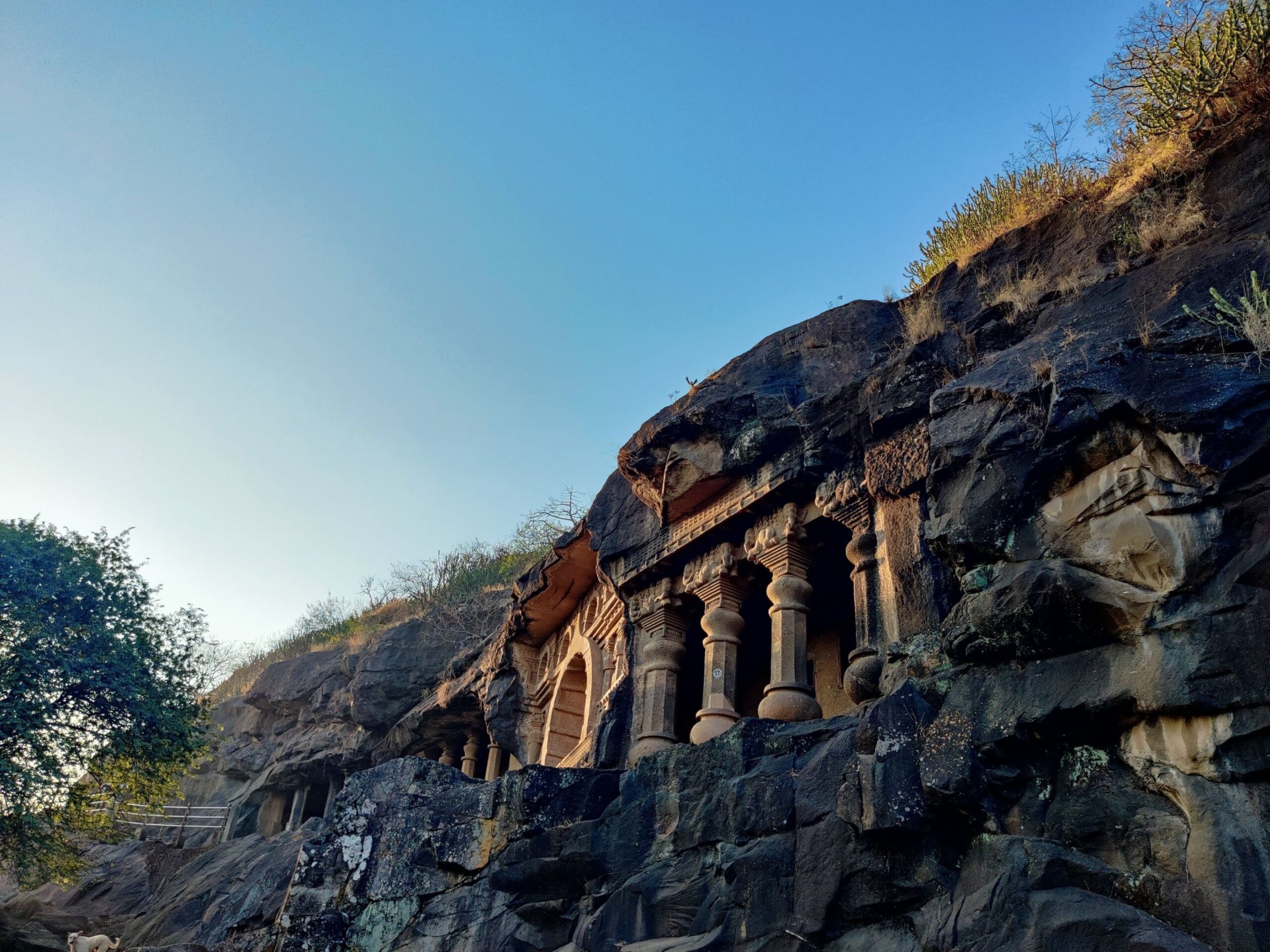The Pandavleni Caves are a group of rock-cut caves located near the modern-day city of Nashik. The caves are known to have been carved into the Trirasmi Hill sometime between the 3rd century BC and the 5th century AD. The exquisite carvings and architectural creations within these caves are a testament to the advanced skills of the artisans of this region in the ancient past.
At present, the Padavleni Nashik Cave system, better known simply as the Nashik Caves, consists of 24 separate caves. These caves are associated with Hinayana Buddhist culture and they are also called the Buddha Caves by locals. Most of the caves have carvings and inscriptions associated with Buddha and his teachings; there are some mentions of a few Jain Tirthankaras as well. Historians believe that local rulers of the time, like the Satavahanas and the Kshatrapas, contributed craftsmen and materials for the carving of these caves. A unique and stunning feature of this cave system is the existence of water-related features like fountains or water tanks in each of the 24 caves.
Amateur history enthusiasts, as well as professional historians, can spend hours exploring Pandavleni. But any layperson tourist can also find a deep sense of fulfilment in witnessing the skills and values of our ancient ancestors. Caves 3, 10 and 18 are most popular among tourists because of the intricate sculptures used to decorate these caves.
How to Reach the Pandav Leni Caves Nasik
• It is easiest to reach these caves by road from Nashik. The caves are located along the side of the Mumbai Agra National Highway.
• The cheapest method to visit these caves is probably by train. Visitors will have to get off at the Nashik Road station and then travel 10kms by car or bus to reach the caves.
• Visitors from other states can fly into the Nashik airport (Ojhar Nashik International Airport). The airport is 24kms away from the city, and then the Pandavleni cave system is just around 8kms to the south of the main city centre.
Best Time to Visit the Pandavleni Caves Nasik
The best time to visit these caves is generally between the months of July to February. The Trirasmi Hills are beautiful during this period and add to the overall experience of visiting the caves. The cave system is located 3004 ft above sea level and provides beautiful views of the whole city stretching below.
Brief History of the Pandavleni Caves Nasik
Historical documentation generally places the Pandavleni Caves to have come into existence during the period of the Satavahana rulers of western Maharashtra. But more people actually know of this cave system because of its association with Hindu mythology.
According to the Mahabharata, these caves were carved out by the Pandava brothers as a hiding spot to outsmart their enemies. That is the reason why these caves are called Pandavleni. ‘Leni’ in Marathi translates to ‘cave’. Pandava Leni thus literally means the Pandava Cave.
There is another alternative history as well about the terminology of the Pandavleni Caves. Some scholars and locals believe that the name actually comes from the word ‘pundru”, which refers to a yellow ochre shade in the Pali language. This colour was significant because Buddhist monks of the period wore yellow ochre robes. These monks are believed to have used these caves for their meditation and worship.
The Primary Concept Behind Building the Pandavleni Caves Nasik
The Pandav Leni Nashik Caves are an exceptionally well-preserved example of a flourishing stage in the development of rock-cut architecture in ancient India. The rocks were carved into the northern face of the Trirasmi Hill, which has protected them from the direct forces of the southwest monsoon.
Whether this was intentional or not by the creators, this has ultimately helped in preserving the carvings and inscriptions inside the caves for thousands of years. But surprisingly, most of the caves have simpler interiors compared to their more elaborate outer facades. Only a few of the caves, like 3, 10 and 18 have extremely elaborate structures inside the caves as well. The Buddhist cultural influence is very strongly visible in all the architectural designs of these caves.
Prati Kedarnath Nashik (प्रति केदारनाथ नाशिक) Serene Spiritual Destination- Must visit in 2023
Interior of the Pandavleni Caves Nashik: What to Expect
Art historians who have studied the Pandavleni Caves in-depth believe that the caves were mainly designed to be Buddhist viharas (residence of Buddhist monks). Monks used to take refuge inside these caves during the monsoon months. Only cave 18, one of the most elaborate of the Pandavleni Cave system is believed to have a different function. It has a stupa (Buddhist shrine) inside it and was probably meant to be a space of worship (Chaitya) for the monks living in the other vihara caves.
Must Read: Trimbakeshwar Temple: Nashik’s Most Powerful Shiva Temple
The history of the Pandavleni is long and disputed, but also beautiful and interesting. It shows an important phase in Indian history and has been preserved and protected by the Government of Maharashtra to leave behind for the future generations. So, if you are in the Nashik area and are looking for a quick day trip, then these caves are the perfect spot to learn something new and also to take in some picturesque bird’s eye views of the city.
Plan your weekend trip with friends today and enrich your understanding of India’s past.
Misal Pav of Nashik – Find the Best Spots to Taste the Signature

Hey, I really love your content, the amount of detail and information you have provided is incredible. Also if you are a avid traveller and looking for best price for your hotels and flight tickets. Then check us out on and start your journey today.